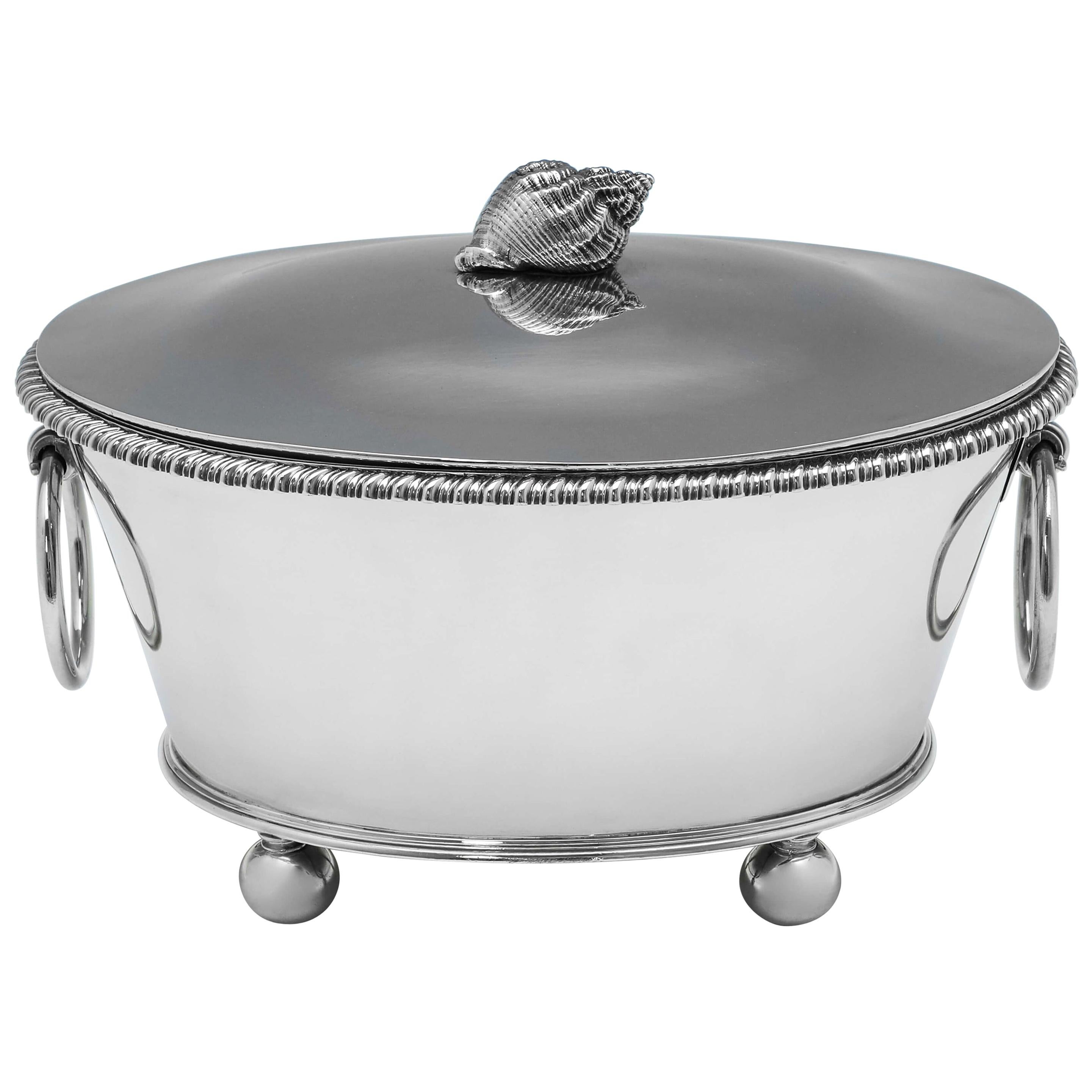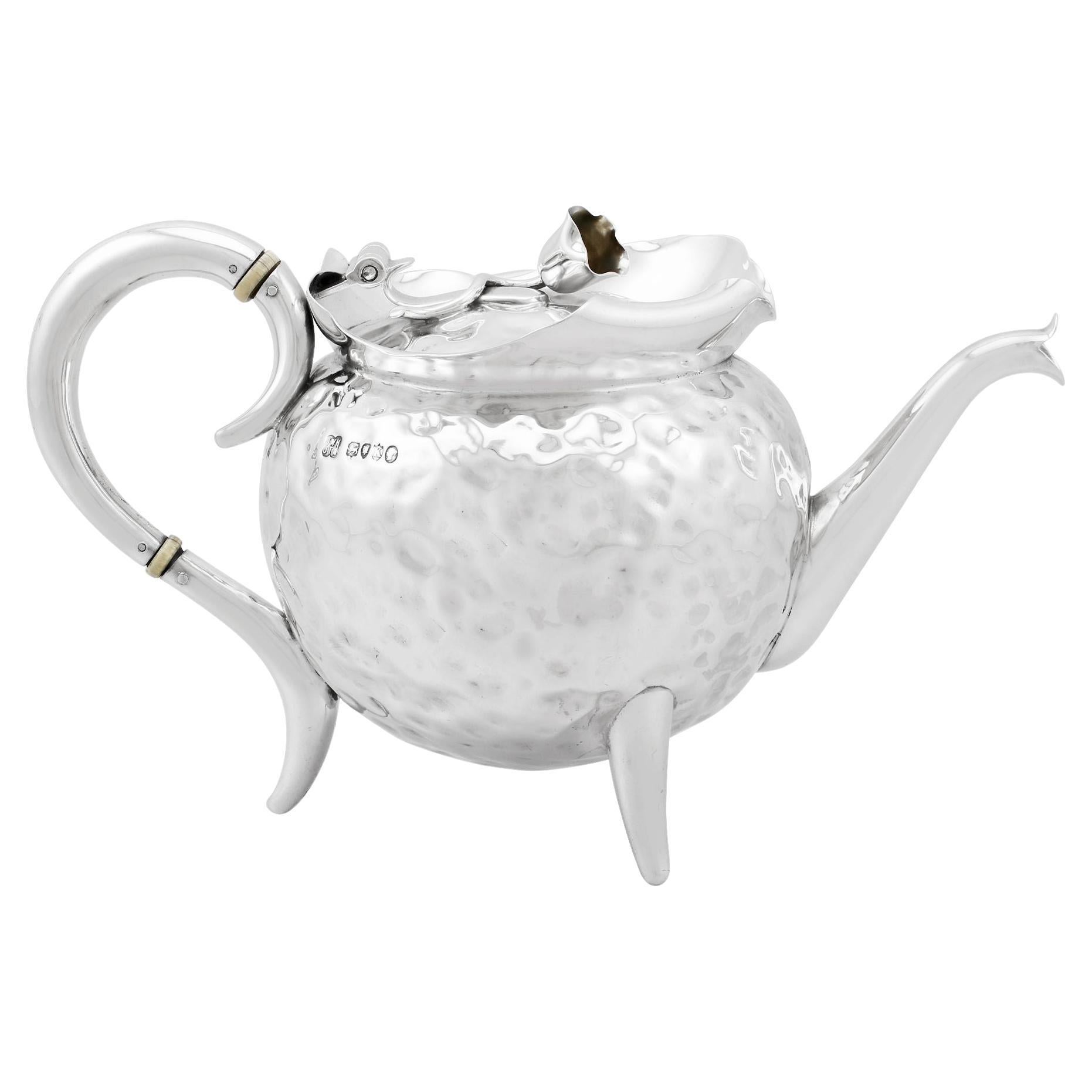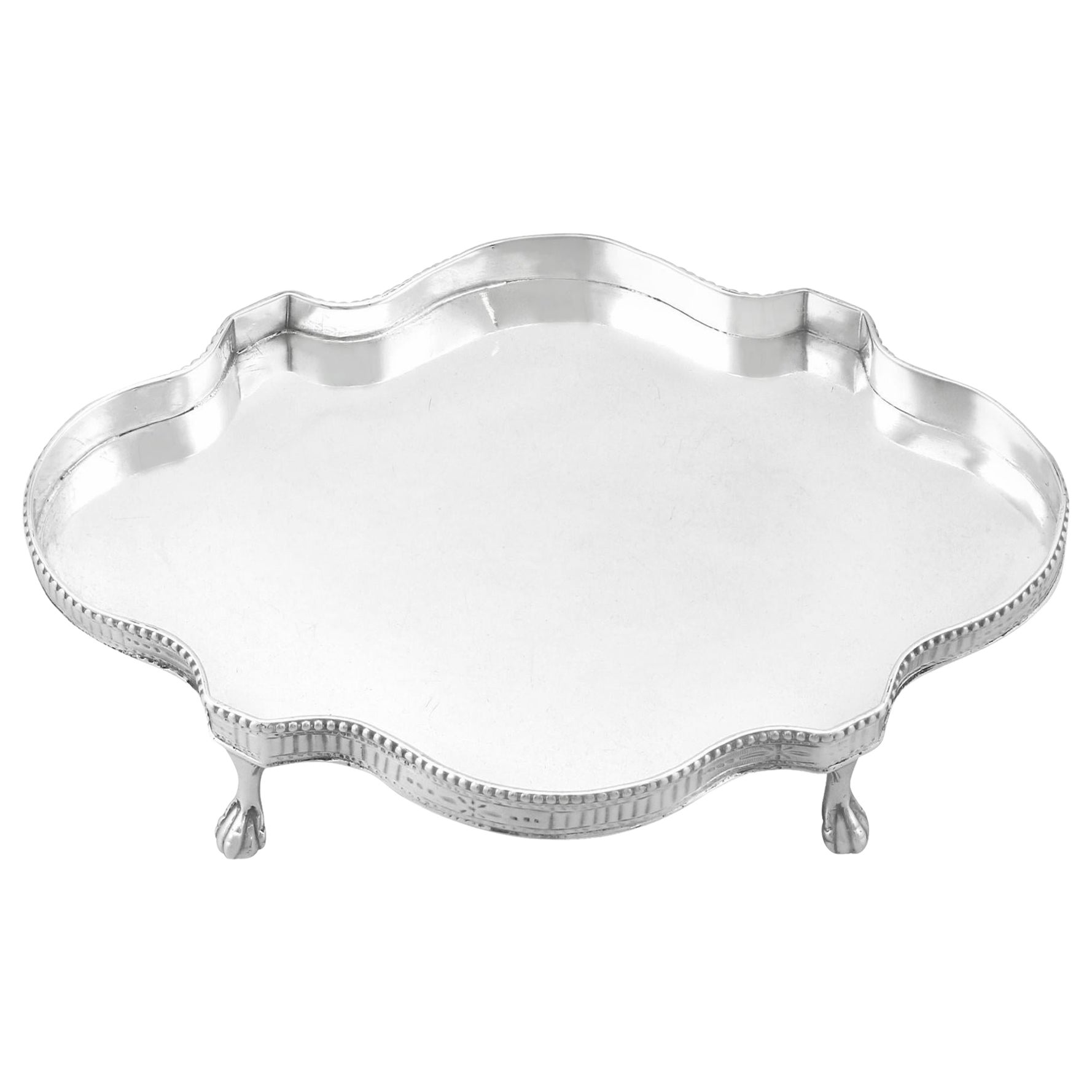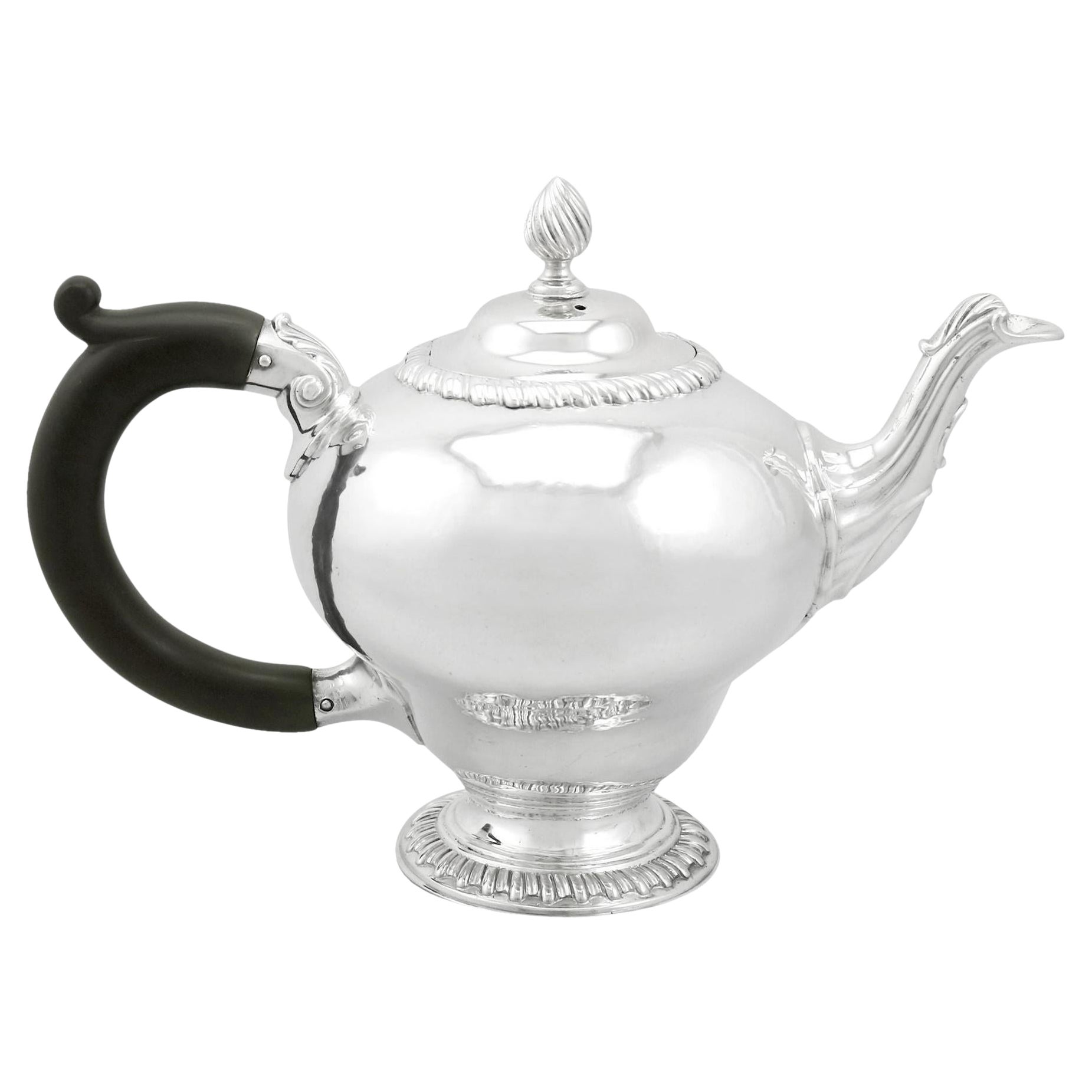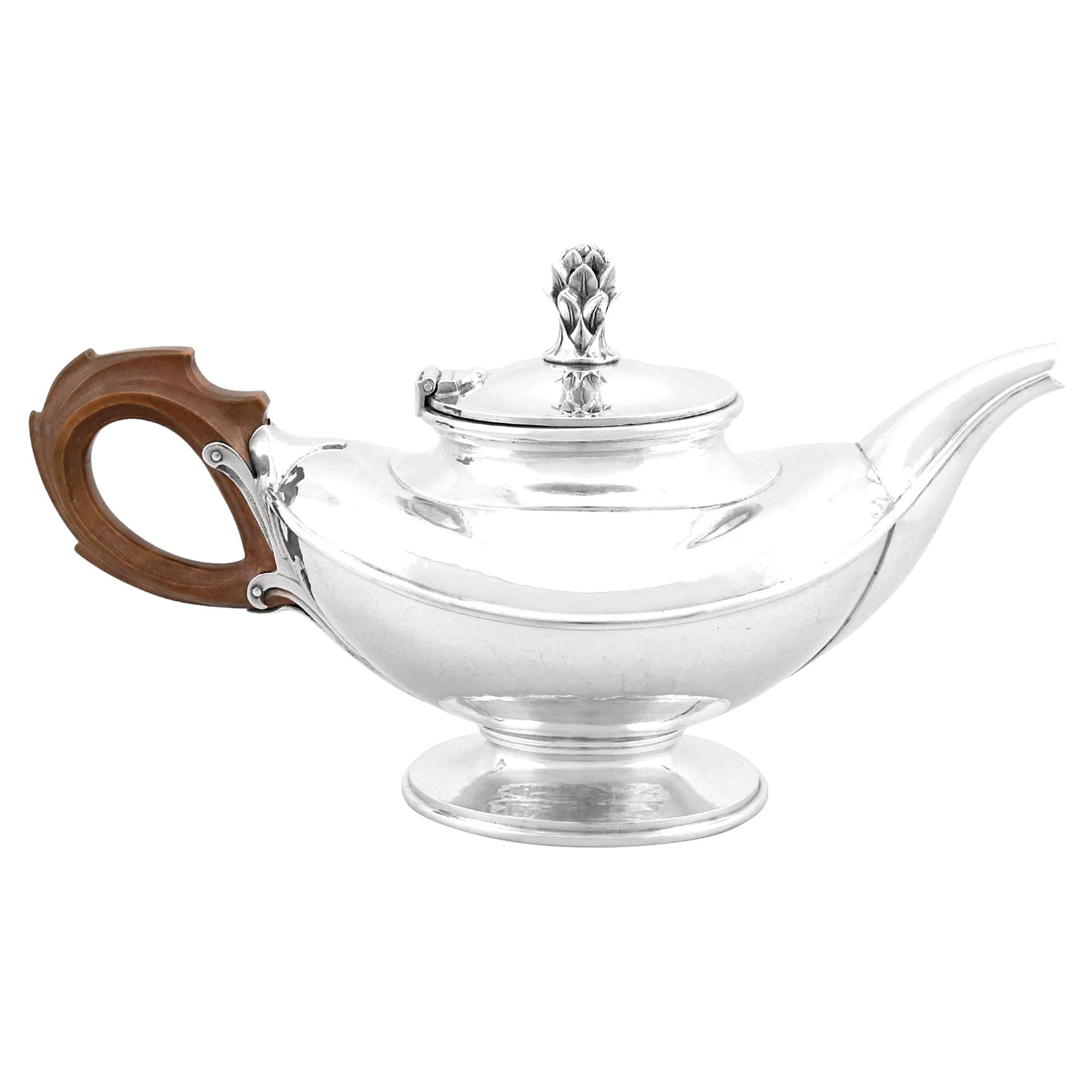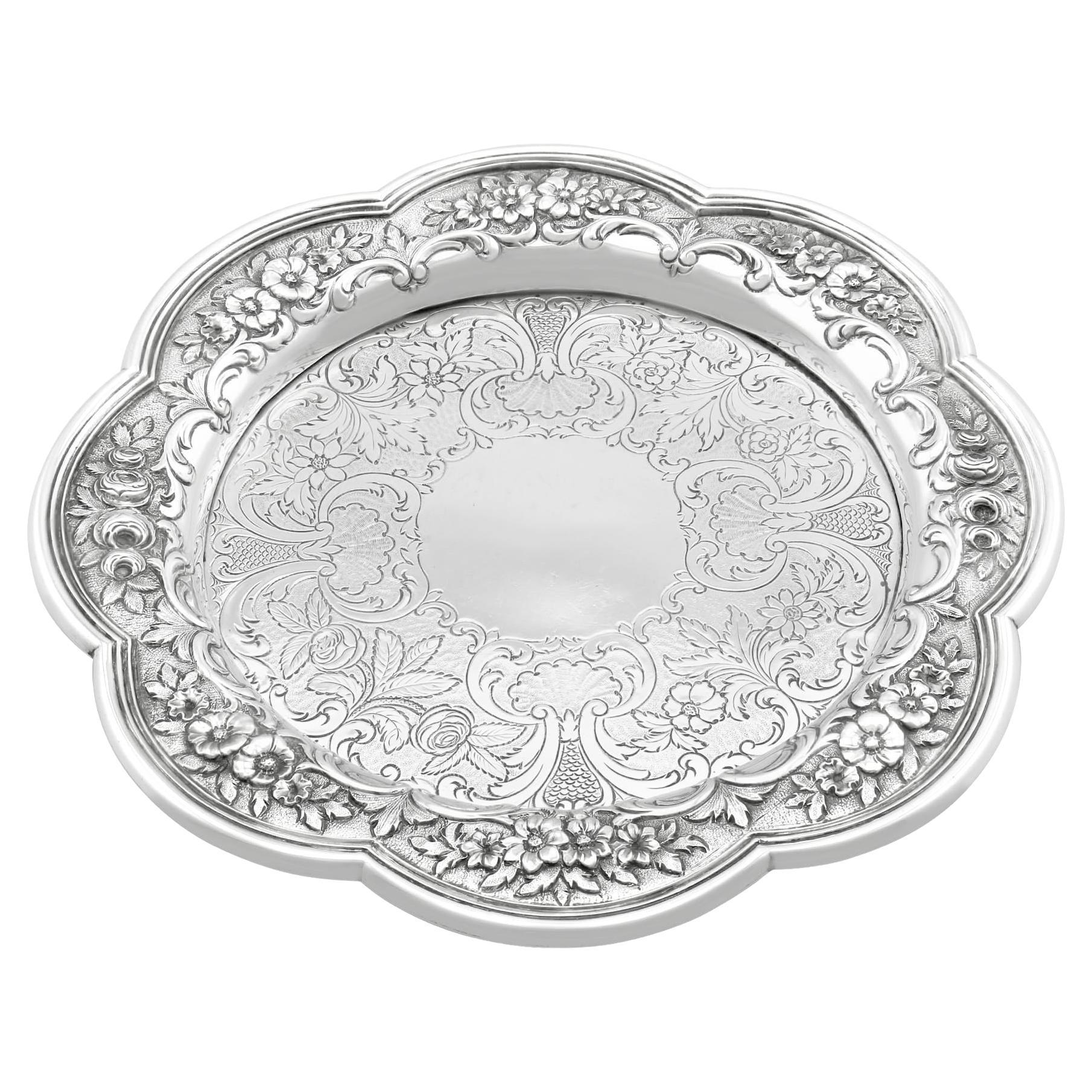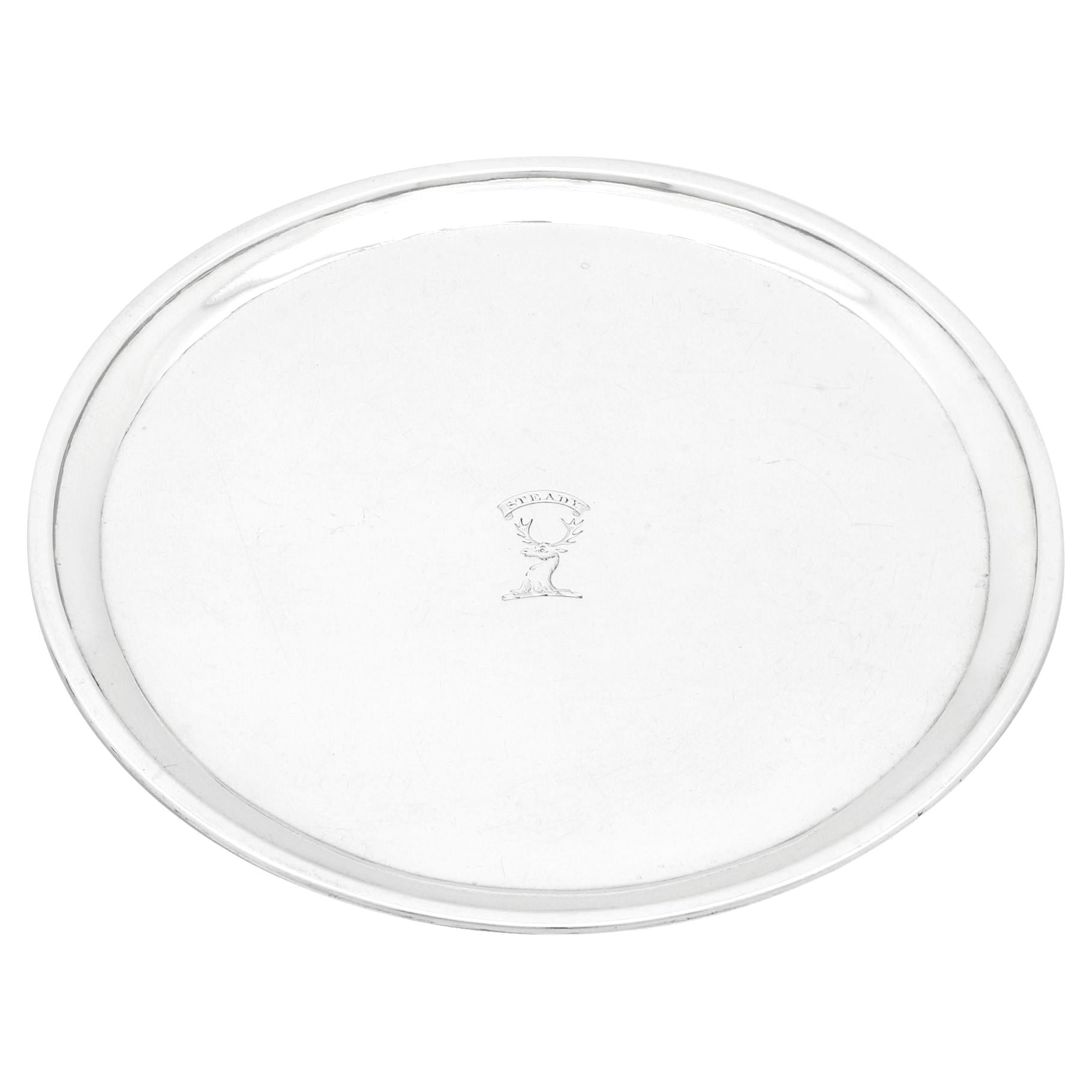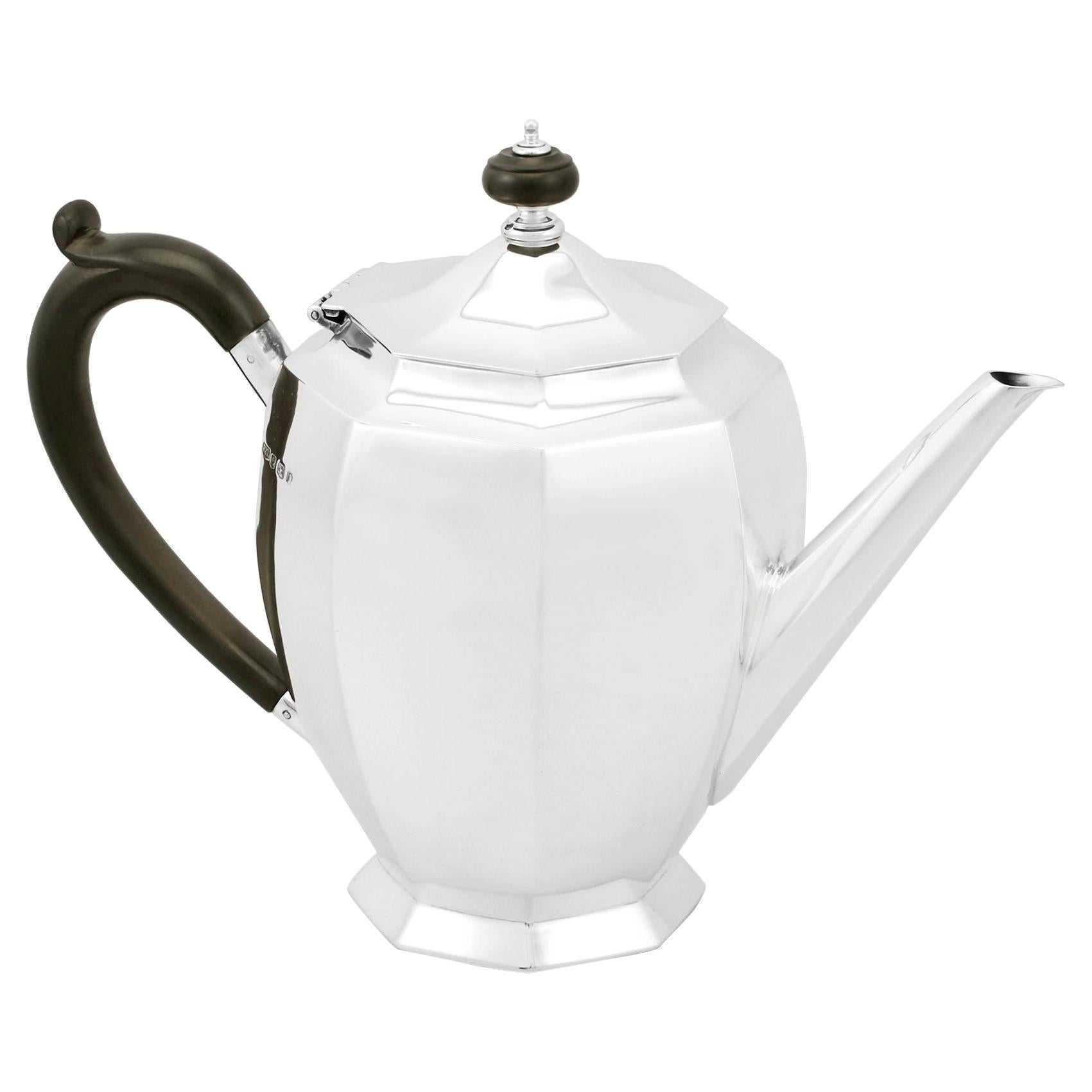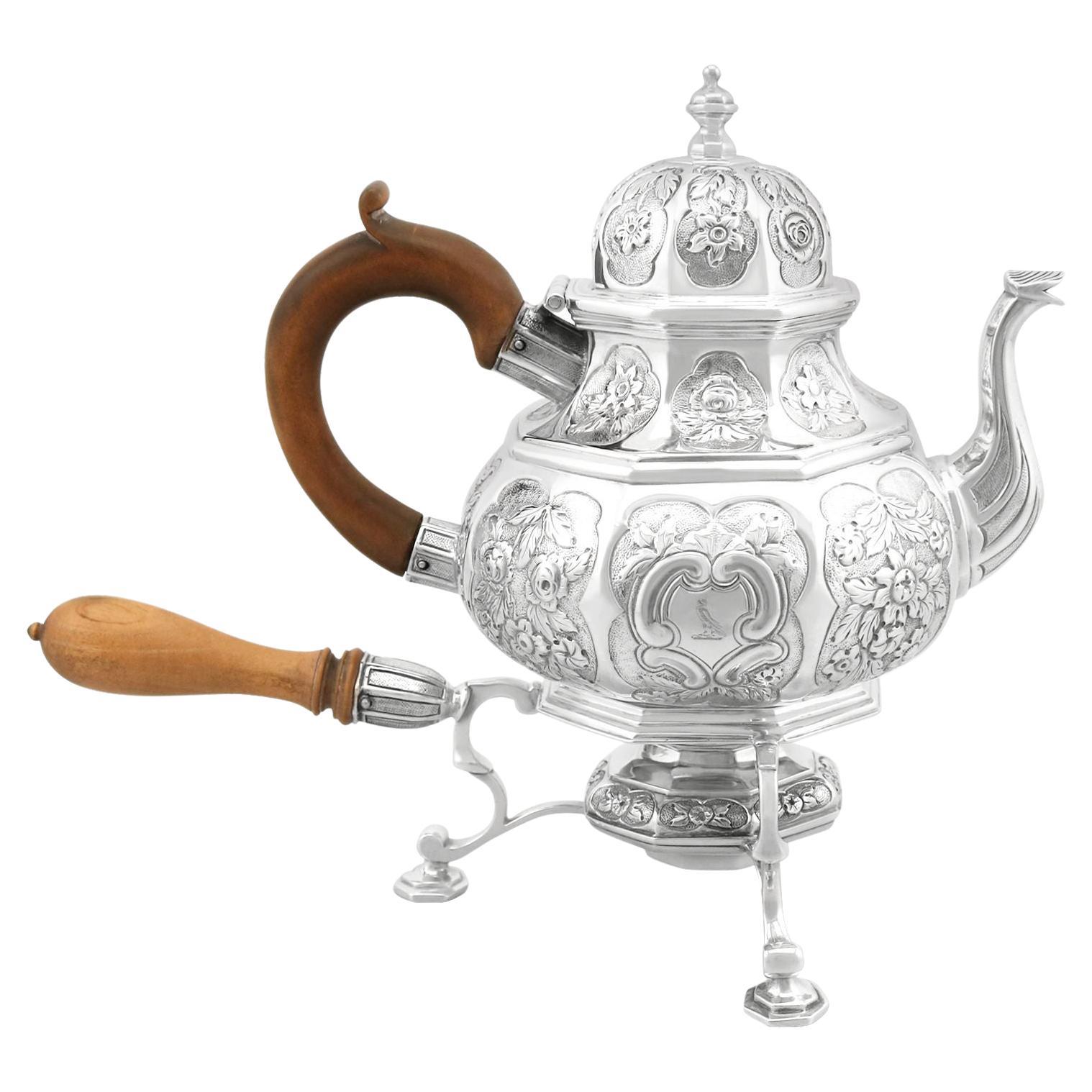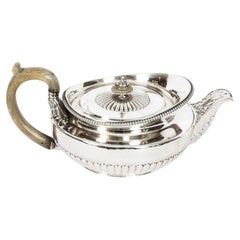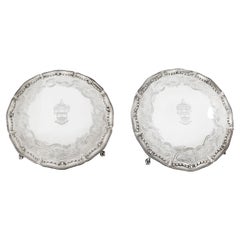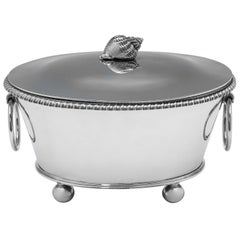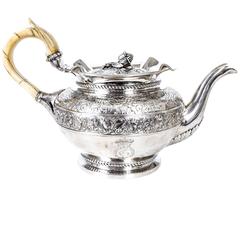
Antique Sterling Silver Teapot by John Bridge, 1825
View Similar Items
Want more images or videos?
Request additional images or videos from the seller
1 of 11
Antique Sterling Silver Teapot by John Bridge, 1825
About the Item
About the Seller
5.0
Platinum Seller
These expertly vetted sellers are 1stDibs' most experienced sellers and are rated highest by our customers.
Established in 1983
1stDibs seller since 2012
1,204 sales on 1stDibs
Typical response time: 1 hour
Associations
LAPADA - The Association of Arts & Antiques Dealers
More From This SellerView All
- Antique Rare Georgian Sterling Silver Teapot by Paul Storr 1817, 19th CenturyBy Paul StorrLocated in London, GBThis is an exceptional and very rare antique English George III sterling silver teapot by the world-famous silversmith, Paul Storr, and bearing hallmarks for 1817. This splendid teapot is of a delightful shape and it is profusely chased with half ribbed fluting decoration. It is further embellished with wonderful foliate motifs below and above the spout and stunning gadrooned shaped borders to the top of the teapot and the base. The remarkable quality flush hinged lid is also beautifully surmounted by a delightful round finial. It features an exceptional horn handle with striking details, proving the silversmith's exceptional mastery in the creation of unique and luxurious silverware - Paul Storr never tired of adding detail to create a true piece of artwork. The underside of the teapot bear full hallmarks: the Lion passant for sterling silver, the leopard head for London, the letter for 1817 and the maker's marks 'PS' for Paul Storr. There is no mistaking its unique quality and design, which is sure to make it a treasured piece by any discerning collector. Condition: In excellent condition with clear hallmarks and no dings, dents or signs of repair. Please see photos for confirmation. Dimensions in cm: height 12.5 x width 18 x depth 18 Weight 0.88 kg Dimensions in inches: height 5 inches x width 7 inches x depth 7 inches Weight 28.2 troy oz Paul Storr born in London England in 1771, was to become one of the most talented silversmiths of the nineteenth century. Today his legacy of exceptionally well crafted silver, found worldwide in museums and private collections, leaves one in awe when compared to that of his contemporaries.After having served a seven year apprenticeship from the age of 14, he began his career in 1792 when he went into a brief partnership with William Frisbee. This did not last and in 1793 a new mark, (his initials ‘P S’) was entered. By the beginning of the nineteenth century he had established himself as one of London’s top silversmiths producing, amongst others, commissions for Royalty. In 1801 he married Elizabeth Susanna Beyer with whom he was to have ten children. In 1807 Paul Storr entered into a working relationship with Philip Rundell and by 1811 was a partner, and managing the workshops for Rundell, Bridge & Rundell. During this period he kept his own marks and separate workshop. However it was through Rundell, Bridge & Rundell who were appointed Goldsmith in Ordinary to George III in 1804 that his reputation as a master silversmith grew. His talents lay in being able to transform ideas and designs from Rundell, Bridge & Rundell’s designers, William Theed...Category
Antique 1810s English George III Sterling Silver
MaterialsSterling Silver
- Antique Pair Sterling Silver Salvers by John Carter 1772 18th CBy John CarterLocated in London, GBThis is a wonderful pair of English 18th Century antique sterling silver salvers by the renowned silversmith John Carter. They each have hallmarks for London 1772, the makers mark of John Carter and are typical of his work with the exquisitely detailed rims, ball and claw feet and the superb engraved decoration. They each bear a beautifully engraved coat of arms and the crest of the Terry Family, which I have researched: The Arms of the Family of Terry The arms as engraved upon this Pair of George III English Sterling Silver Footed Salvers by John Carter hallmarked London 1872 are those of the family of Terry. They may be blazoned as follows: Arms: Sable on two bars or three cross crosslets two and one (……?) and issuant from the bar in chief a demi-lion rampant Crest: A boar’s head erased and erect Motto: E cruce leo [From the cross a lion] The arms as engraved upon this pair of salvers certainly have characteristics with arms borne by another family and branch thereof named Terry who hailed from the County of Cork in Ireland. Notably the use of the three cross crosslets and the demilion rampant, but in a different placement upon the arms. The crest seen here is also at a variance with the other Terry arms where a demi-lion rampant is used. Upon an exhaustive examination of other sources, together with the present evidence, I believe that the family who had the salvers in their possession undoubtedly bore these arms without authority a fact that often occurred in the 18th and 19th Centuries and at other periods. Many families bore armorial bearings that they assumed and used for many generations in that they either consciously or unconsciously eschewed an approach to The College of Arms...Category
Antique 1770s English Sterling Silver
MaterialsSterling Silver
- Antique Set of 3 Sterling Silver Candlesticks William Gibson & John Langman 1895Located in London, GBThis is a striking set of three antique English Victorian sterling silver candlesticks bearing the makers' marks of the renowned silversmiths William Gibson & John Langman, London, a...Category
Antique 1890s English Victorian Sterling Silver
MaterialsSterling Silver
- Antique Victorian Sterling Silver Casket by William Comyns & Sons 1898By William Comyns & Sons 1Located in London, GBThis is an elegant antique Victorian sterling silver casket with hallmarks for London, 1898 and the makers marks of the renowned silversmith William Comyns & Sons. The shaped casket...Category
Antique 19th Century English Victorian Sterling Silver
MaterialsSterling Silver
- Antique Sterling Silver Tureen by Marc Jacquard Retailed by Bulgari 19th CenturyLocated in London, GBThis is a magnificent antique French sterling silver soup tureen and lid, retailed by Bulgari Rome with hallmarks for the maker Marc Jacquard and circa 1810 in date. This round Silver Serving Tureen has Rococo elements perfectly accenting the elegant body, with bold scroll handles decorated with foliate and floral ornamentation and stands on a pedestal foot with an encircled border. It features an exceptional cast floral and fruit bouquet finial on the lid. The tureen is beautiful in its simplicity and comes with its own vintage luxury case labelled Bulgari. Condition: In excellent condition with clear hallmarks and no dings, dents or signs of repair. Please see photos for confirmation. Dimensions in cm: Height 28 x width 37 x depth 29 Weight 76 troy oz Dimensions in inches: Height 11.0 x width 14.6 x depth 11.4 Weight 2.36 kg Bulgari The founder of the Bulgari brand is Sotirios Voulgaris who was born in March 1857 and came from the Epirus Village of Paramythia, the largest Aromanian center of silversmithing in the Balkans. He was one of eleven children of his father Georgios Voulgaris (1823–1889) and his Aromanian mother Eleni Stronggaris. In 1881, Sotirios Bulgari moved to Rome and, in 1884, opened his first store on via Sistina 85. In 1888, he married Aromanian Eleni Basio with whom he had six children: Constantine-Georgios (1889–1973), Leonidas-Georgios (1890–1966), Maria-Athena (1891–1976), Sofia (1893–1908), Alexandra (1895–1984) and Spyridon (1897–1932); Leonidas-Georgios is the father of the current chairman of the company, Paolo Bulgari.[9] In 1905, he unveiled the Via Condotti shop that would become the company's flagship.[10] In its early years, Bulgari was known for silver pieces that borrowed elements from Byzantine and Islamic art, combining them with floral motifs. At the time, Paris was the apex of fashion and creativity, and its trends influenced Sotirio's designs for decades: jewels of the early 20s were characterised by platinum Art Deco settings while those of the 30s featured geometric diamond motifs—sometimes set in combination with coloured gemstones. Convertible jewels...Category
Antique 1810s French Sterling Silver
MaterialsSterling Silver
- Antique George III Sterling Silver Salver by Paul Storr 1811 19th CenturyBy Paul StorrLocated in London, GBThis is a wonderful English antique George III sterling silver 10 inch salver, by the world famous silversmith Paul Storr. It has clear hallmarks for London 1811 and the makers mark of Paul Storr. It is typical of his work with the raised gadrooned rim with anthemion at intervals, on four fabulous foliate bracket feet. The salver is engraved with a crest and motto and the underside is later engraved Charlotte J. Parke from C. J. Parke, March 1893' The centre is engraved with a crest above a motto 'True and Fast' and I have researched this crest: The Crest of Parke The crest as engraved upon this George III English Sterling Silver Footed Salver by Paul Storr hallmarked London 1811 is that of the family of Parke. It may be blazoned as follows: Crest: A stag’s head couped sable holding in the mouth a key or Motto: True and fast The family of Parke originally hailed from the County of Cumberland in the northeast of England1 later settling in the County of Dorset at Henbury House, Sturminster Marshal, near Wimborne. Given the evidence of the inscription found on the underside of the salver ‘Charlotte J. Parke from C. J. Parke, March 1893’ it was undoubtedly at one time in the possession of Charles Joseph Parke (died 9th March 1893) of Henbury House aforesaid and gifted to Charlotte Josephine Parke (baptised 4th January 1857 died 2nd January 1941) his third daughter by his wife, Ellen Mary Ethelston. I would venture the following hypothesis that the salver was bequeathed to Charlotte in her father’s will that was granted probate at London on the 20th May 1893. The ‘March 1893’ of the inscription acts as a remembrance of the month of the death of her father. It was noted that Charlotte’s father left an estate worth some £66,892, 19 shillings and one pence, a very considerable sum in the last decade of the 19th Century and even thereafter. Charlotte never married and was living at the time of her death at The Coppice, Sixpenny Handley in the County of Dorset. Her will was proved for probate at Llandudno on the 25th March 1941. She left an estate worth £18,866, 10 shillings and 4 pence. Again, a comfortable sum in 1941. See the photo of Henbury House, Sturminster Marshal, near Wimborne, Co. Dorset. The former seat of the Parke family. The house was destroyed by fire, the remains of which were demolished in the 1990's. There is no mistaking its unique quality and design, which is sure to make it a treasured piece by any discerning collector. Condition: In excellent condition with clear hallmarks and no dings, dents or signs of repair. Please see photos for confirmation. Dimensions in cm: Height 2 x Width 26.5 x Depth 26.5 Weight 0.69 kg Dimensions in inches: Height 1 inch x Width 10 inches x Depth 10 inches Weight 1.5 lbs Paul Storr born in London England in 1771, was to become one of the most talented silversmiths of the nineteenth century. Today his legacy of exceptionally well crafted silver, found worldwide in museums and private collections, leaves one in awe when compared to that of his contemporaries.After having served a seven year apprenticeship from the age of 14, he began his career in 1792 when he went into a brief partnership with William Frisbee. This did not last and in 1793 a new mark, (his initials ‘P S’) was entered. By the beginning of the nineteenth century he had established himself as one of London’s top silversmiths producing, amongst others, commissions for Royalty. In 1801 he married Elizabeth Susanna Beyer with whom he was to have ten children. In 1807 Paul Storr entered into a working relationship with Philip Rundell and by 1811 was a partner, and managing the workshops for Rundell, Bridge & Rundell. During this period he kept his own marks and separate workshop. However it was through Rundell, Bridge & Rundell who were appointed Goldsmith in Ordinary to George III in 1804 that his reputation as a master silversmith grew. His talents lay in being able to transform ideas and designs from Rundell, Bridge & Rundell’s designers, William Theed...Category
Antique 1810s English George III Sterling Silver
MaterialsSterling Silver
You May Also Like
- George IV Antique Sterling Silver Bouillabaisse Tureen by John Bridge, 1825By John BridgeLocated in London, LondonHallmarked in London in 1825 by John Bridge, this stylish, George IV, antique sterling silver Bouillabaisse Tureen, stands on four ball feet, and features a shell finial to the lid, ...Category
Antique 1820s English George IV Sterling Silver
MaterialsSterling Silver
- Antique Victorian Sterling Silver TeapotBy Charles Reily & George StorerLocated in Jesmond, Newcastle Upon TyneAn exceptional, fine and impressive antique Victorian English sterling silver teapot; an addition to our silver teaware collection This exce...Category
Antique 19th Century English Victorian Tea Sets
MaterialsSilver, Sterling Silver
- Antique Victorian Sterling Silver TeapotBy Hukin & HeathLocated in Jesmond, Newcastle Upon TyneAn exceptional, fine and impressive, unusual antique Victorian English sterling silver teapot; an addition to our silver teaware collection. This exceptional antique Victorian teapot...Category
Antique 1880s British Victorian Sterling Silver
MaterialsSterling Silver
- John Langlands I & John Robertson I Newcastle Sterling Silver Teapot StandBy John Langlands I & John Robertson ILocated in Jesmond, Newcastle Upon TyneA fine and impressive antique Georgian Newcastle sterling silver teapot stand made by John Langlands I & John Robertson I; an addition to ...Category
Antique 1780s English George III Sterling Silver
MaterialsSterling Silver
- Antique Georgian Sterling Silver Bachelor TeapotLocated in Jesmond, Newcastle Upon TyneAn exceptional, fine and impressive antique George III English sterling silver bachelor teapot; an addition to our Georgian silver teaware collection This exceptional antique Edwardian sterling silver teapot has an inverted pear shaped form onto a circular spreading foot. The surface of the bachelor teapot is plain and unembellished. The upper rim of the body is ornamented with a band of cast and applied gadroon decoration all in a swirl design. This antique silver teapot is fitted with a hallmarked, domed flush hinged cover surmounted with an impressive and original, cast sterling silver flame style finial; the flush hinge indicates the high quality of the piece. This exceptional example of antique teaware retains the original C scroll carved painted wood handle featuring a plain scrolling thumbpiece and a cast silver leaf decorated design to the upper socket, This impressive example of antique silverware has a cast silver swan necked spout embellished with fluted decoration and applied leaf motif to the lip. The ornamentation to the underside of the spout incorporates a vacant oval cartouche below a shell motif. The cast circular spreading foot is encircled with further gadroon decoration to the rim. Note: This maker may have been recorded in the missing 1739-1758 Smallworkers' Register or the 1758-1773 Largeworkers' Register, determining this maker's mark to be classed as 'unidentified' in all documents. The mark has been discovered on other holloware items such as mugs, salts and sauce boats. Condition This antique silver teapot for one...Category
Antique 18th Century English George III Sterling Silver
MaterialsSilver, Sterling Silver
- Antique Sterling 925/°°° Silver Finely Chased TeapotLocated in Torino, ITManufactured by Charles Wright, London, England, 1771.Category
Antique 1770s English Sterling Silver
MaterialsSterling Silver
